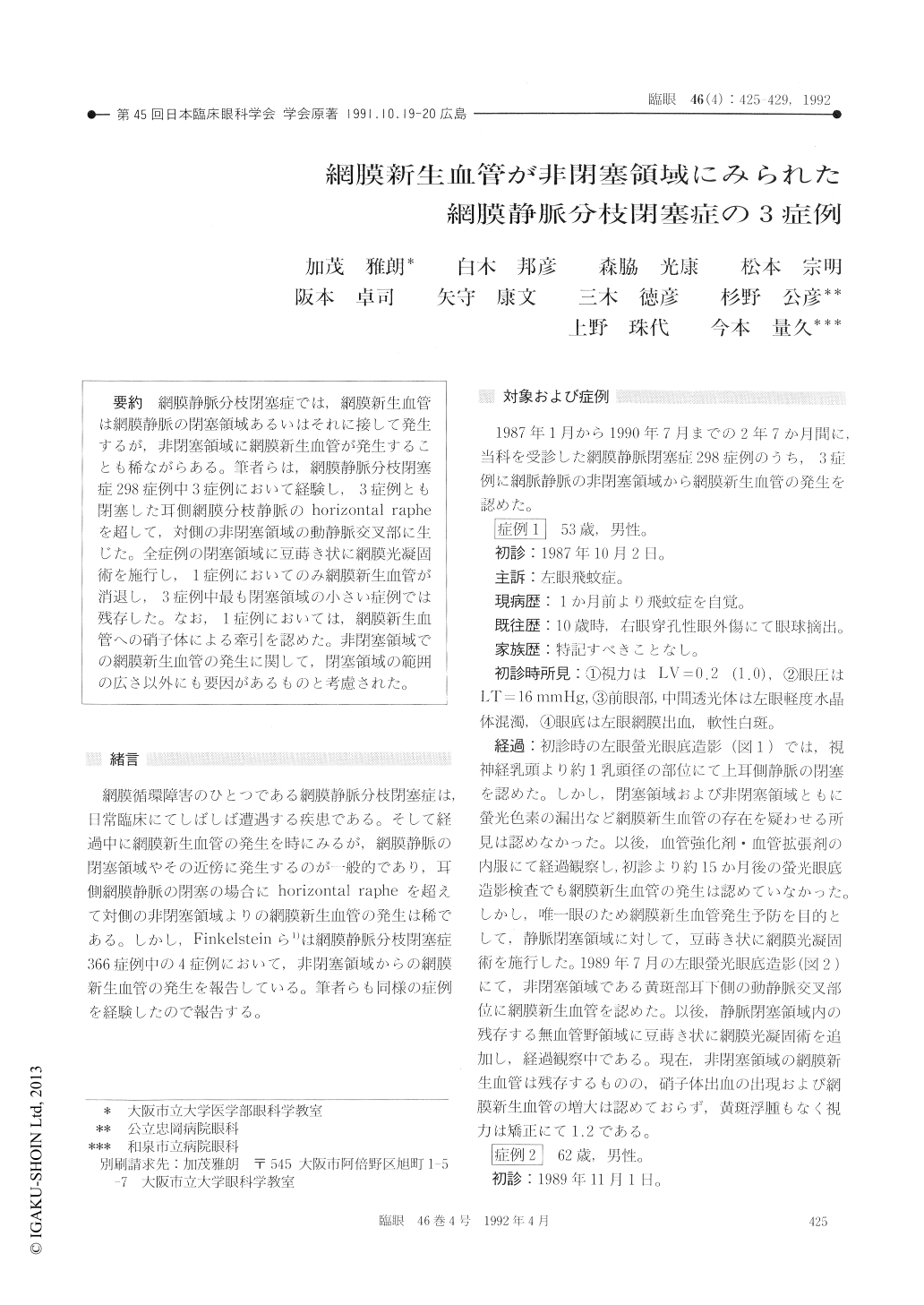Japanese
English
- 有料閲覧
- Abstract 文献概要
- 1ページ目 Look Inside
網膜静脈分枝閉塞症では,網膜新生血管は網膜静脈の閉塞領域あるいはそれに接して発生するが,非閉塞領域に網膜新生血管が発生することも稀ながらある。筆者らは,網膜静脈分枝閉塞症298症例中3症例において経験し,3症例とも閉塞した耳側網膜分枝静脈のhorizontal rapheを超して,対側の非閉塞領域の動静脈交叉部に生じた。全症例の閉塞領域に豆蒔き状に網膜光凝固術を施行し,1症例においてのみ網膜新生血管が消退し,3症例中最も閉塞領域の小さい症例では残存した。なお,1症例においては,網膜新生血管への硝子体による牽引を認めた。非閉塞領域での網膜新生血管の発生に関して,閉塞領域の範囲の広さ以外にも要因があるものと考慮された。
Out of a consecutive series of 298 cases of branch retinal vein occlusion (BRVO), we observed 3 eyes manifesting neovascularization in the non-occluded retinal area. In all the 3 eyes, occlusion involved thesuperior or inferior temporal vein. Neovasculariza-tion developed 6 to 10 months after the presumed onset of BRVO. Neovascularization was located at the site of arteriovenous crossing in the opposite, non-occluded inferior or superior retinal area. Additionally, disc neovascularization developed in one eye. Scatter laser photocoagulation over the occluded retinal area resulted in regressions of neovascularization in 2 eyes. It appeared that the extent of ischemic retina in BRVO was not the sole factor in the development of neovascularization in the non-occluded retinal area.

Copyright © 1992, Igaku-Shoin Ltd. All rights reserved.


